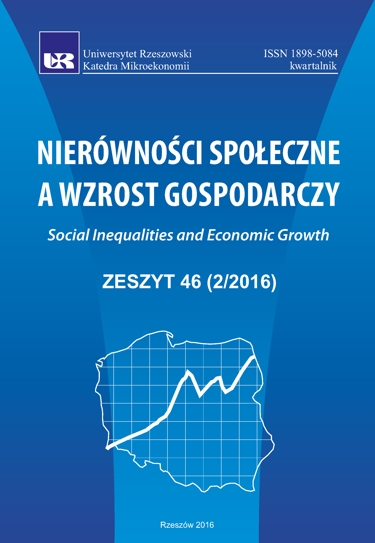Social Capital and Integrated Territorial Investments in Poland
DOI:
https://doi.org/10.15584/nsawg.2016.2.22Keywords:
integrated investment, Poland, social capital, objectives, threatsAbstract
The main goal of this article is the analysis of features of Integrated Territorial Investments (ITI) in relation to cohesion Policy objectives. Up to the end of programming period 2007–2013 the Union has not managed to tie the cohesion policy to the new development paradigm (for in-stance through subordination of the Policy to the Lisbon Strategy). Only for the programming period 2014–2020 strategy Europe 2020 and Parliament and Council regulations (mostly of 13.12.2013) were strengthened with effective impact (control) instruments. ITI can be considered the most advanced experiment, which in case of success may become the foundation for the next programming period. ITI have been not implemented yet, so the results cannot be assessed. The main hypothesis says that the main objective of ITI is to breach a problem of low social capital level and therefore underdeveloped cooperation of public administration and other stakeholders. The article presents the critical remarks on cohesion policy, analyses main features and expectations from the ITI, emphasizing main benefits connected to integrated approach and possibilities of utilization of synergy effect. Cooperation of regional capitals with their direct functional surrounding seems to be the right place for ITI implementation and future assessment of real benefits. In the article also main problems relating to the ITI preparation in 17 functional areas are being discussed. The last part depicts threats to ITI implementation, in particular to making managing institutions accountable not for objectives attainment, but for financial progress. It is difficult to understand and assess objectives attainment: it is much easier to understand progress in terms of expenditure.Downloads
Published
2020-11-10
How to Cite
Kozak, M. W. (2020). Social Capital and Integrated Territorial Investments in Poland. Social Inequalities and Economic Growth, 2(46), 374–384. https://doi.org/10.15584/nsawg.2016.2.22
Issue
Section
Articles
License
Copyright (c) 2016 University of Rzeszow

This work is licensed under a Creative Commons Attribution-ShareAlike 4.0 International License.


